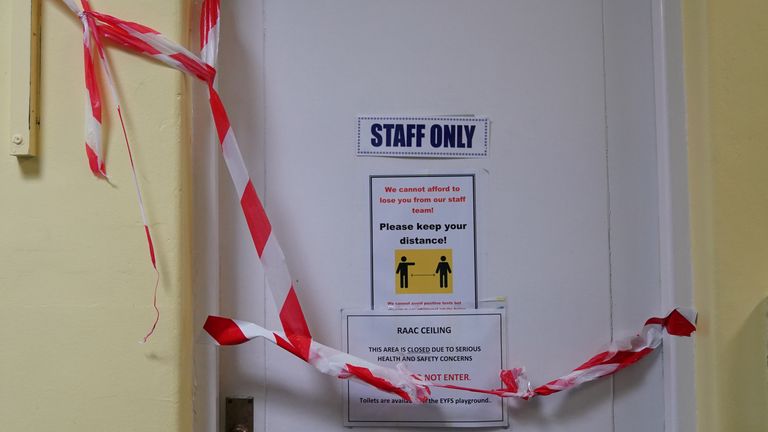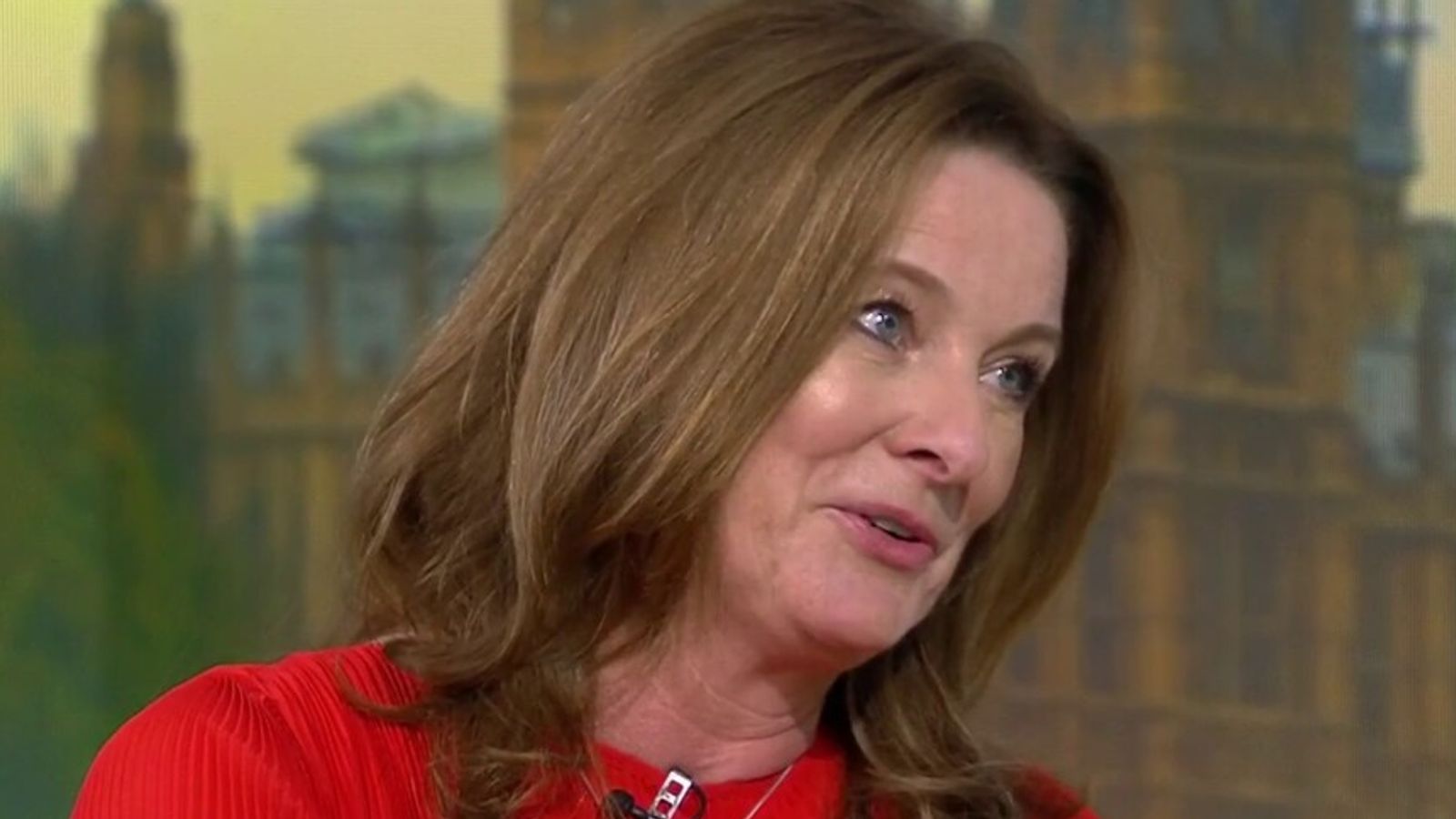Snail’s pace on NHS promises a risk for PM – with bosses not ‘certain’ hospitals with RAAC are safe | Politics News
As the concrete crisis spreads to our courts and prisons, the parliamentary Public Accounts select committee put NHS officials and a senior civil servant through their paces to clarify exactly what is being done to ensure hospitals across the country are safe.
A programme to deal with reinforced autoclaved aerated concrete (RAAC) in hospitals was put in place in 2019 but since RAAC in schools has dominated the headlines, hospital trusts have been checking again for the crumbly concrete in their buildings.
When asked by the committee what the timeline was for the eradication of RAAC in hospitals, NHS England CFO and deputy CEO, Julian Kelly, couldn’t confirm a definite deadline.
He said: “There has been a commitment to eradicate them all by 2035.”
But he went on to say: “We have not done those full structural surveys to properly identify the total scale and level of the issue.”
Until these full surveys are completed – expected to be in a matter of weeks – neither the NHS nor the government can be sure how long it will take to remove RAAC from hospitals or how much it will cost the taxpayer.
Clearly frustrated by a lack of investment in the refurbishment of the nation’s substandard hospital buildings, Mr Kelly told the committee: “We have examples all the time where hospitals are having to shut units, decant patients into other spaces where we are losing theatres, which limits our capacity to treat patients.
“This is happening day in and day out and it’s why we will continue to make the case for increased investment in backlog maintenance.”
When Shona Dunn, permanent secretary at the Department of Health and Social Care, was asked directly if it was safe for hospitals with RAAC to remain open, her response was: “You can never be 100% certain.”
The committee appeared sceptical that the so-called cautious approach we have seen from the Department for Education was being applied with the same zeal to hospital settings.
Read more:
‘Outrageous’ minister tells schools to ‘get off their backsides’
Keegan under fire for ‘opening Pandora’s box’
Starmer says ‘cowboys running the country’
Click to subscribe to the Sky News Daily wherever you get your podcasts
The committee also grilled the panel on the flagship policy announced under Boris Johnson to build 40 new hospitals by 2030.
According to a report from the National Audit Office, the number of hospitals likely to be built by 2030 is in fact only 32, and Mark Francois – a member of the committee and a Tory backbencher – seemed unconvinced by the panel’s answers on the slow progress of the project.
Mr Francois asked: “In three years you’ve built one and you’re now telling us you’re going to build all the other 39 within seven years. Because on your progress to date, you’re not going to get anywhere near it are you?”
He went on to accuse Shona Dunn and her department of “playing a game of smoke and mirrors” with the figures, suggesting the committee was being taken for a ride.
The Labour chair of the committee, Dame Meg Hillier, ended the session by warning against repeating the mistakes of the past.
She said standardisation within the new hospital building programme must not be allowed to mirror the standardisation of the use of RAAC in the construction of public buildings between the 1960s and the 1990s.
But with snail’s pace progress on the Tory promise to build 40 new hospitals, NHS waiting lists and A&E waiting times persistently high, and strikes continuing to cripple the health service, Rishi Sunak will need to be seen to be making headway somewhere on what has been branded the UK’s national religion – or he risks voters losing faith altogether.




